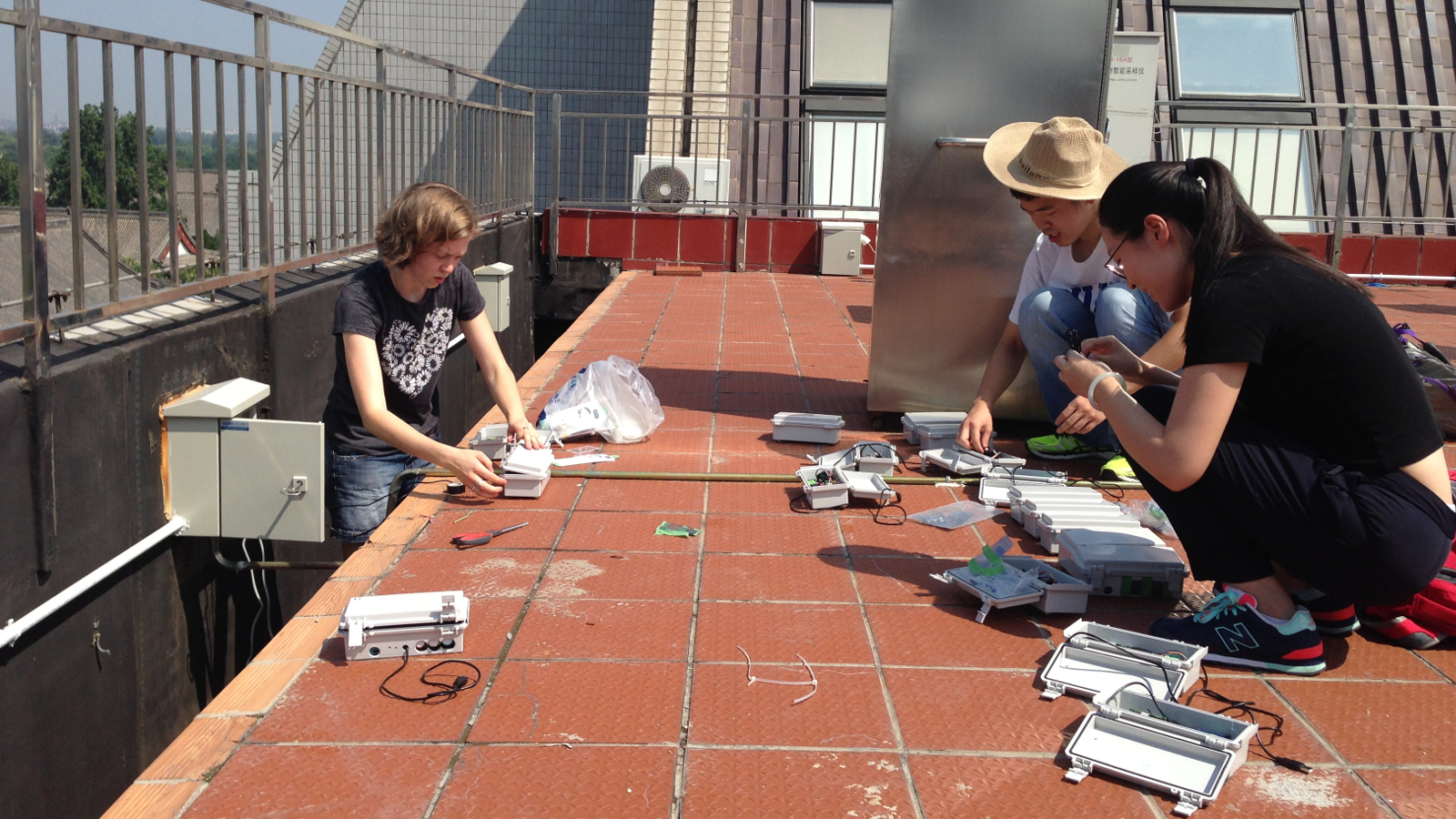Building Air Quality Infrastructure in South Asia
By Ken Kingery
Duke University leads new $2 million program to improve air quality monitoring and public awareness throughout South Asia

Environmental engineers at Duke University have received a three-year, $2 million grant from the United States Department of State to create air quality sensor networks and research programs in several countries throughout South Asia. The project’s goal is to improve air quality and human health throughout the region by partnering with local governmental and private sector partners to improve air quality monitoring and public awareness.
Led by Mike Bergin, professor of civil and environmental engineering at Duke, the project will build on a network of longtime collaborators from the University of Wisconsin at Madison and Indian Institute of Technology at Kanpur, and bring together many new collaborations with industry, governmental and non-governmental organizations and universities across South Asia. The program will build air quality sensor networks in Bangladesh, India, Nepal and Sri Lanka and work to begin similar programs in Bhutan and the Maldives.
“Many of these regions have fantastic experts trained in air quality research, but most don’t have any projects underway nor the equipment required to start them,” said Bergin. “Members of our team have pioneered the development and application of low-cost air quality sensors and demonstrated their usefulness through several projects in China and India. Now our team will work with local partners, universities and government agencies in six countries to build their research capacity and improve their air quality with the expertise we know we have.”
Air pollution is a growing global threat to human health, the environment and economies. Air pollution across much of South Asia is at extremely unhealthy levels, especially PM2.5, which are air particles that have a diameter of less than 2.5 micrometers—about three percent of the diameter of a human hair—and have been shown to have a dramatic effect on human health because of their ability to travel deep into the lungs.
While many developed nations such as the United States and China have invested resources in monitoring and mitigating sources of these pollutants, most sensors are expensive and not within the reach of low-resource countries. Bergin and his laboratory, however, have developed sensors costing hundreds rather than tens of thousands of dollars that could help these regions catch up.
For example, a recent study put these sensors into the homes of about 40 Chinese families to look at how air filters might improve people’s exposure levels and overall health. Its success pointed to the possibility of using these instruments to understand pollution in other places with very few monitors. Once in place, Bergin hopes to pair local air quality measurements with a deep learning approach developed with collaborators at Duke that can estimate ground levels of PM2.5 based on high-resolution satellite imagery.
“Our vision is to make these super high-resolution maps of air pollution so that we know where people get high exposures,” said Bergin. “With that knowledge in hand, we can educate people about exposure and sources, help modify their behavior in the short term to lower their exposure and improve their health, and work with local governments to make actionable policy changes to clean the air and create a more healthy environment.”
